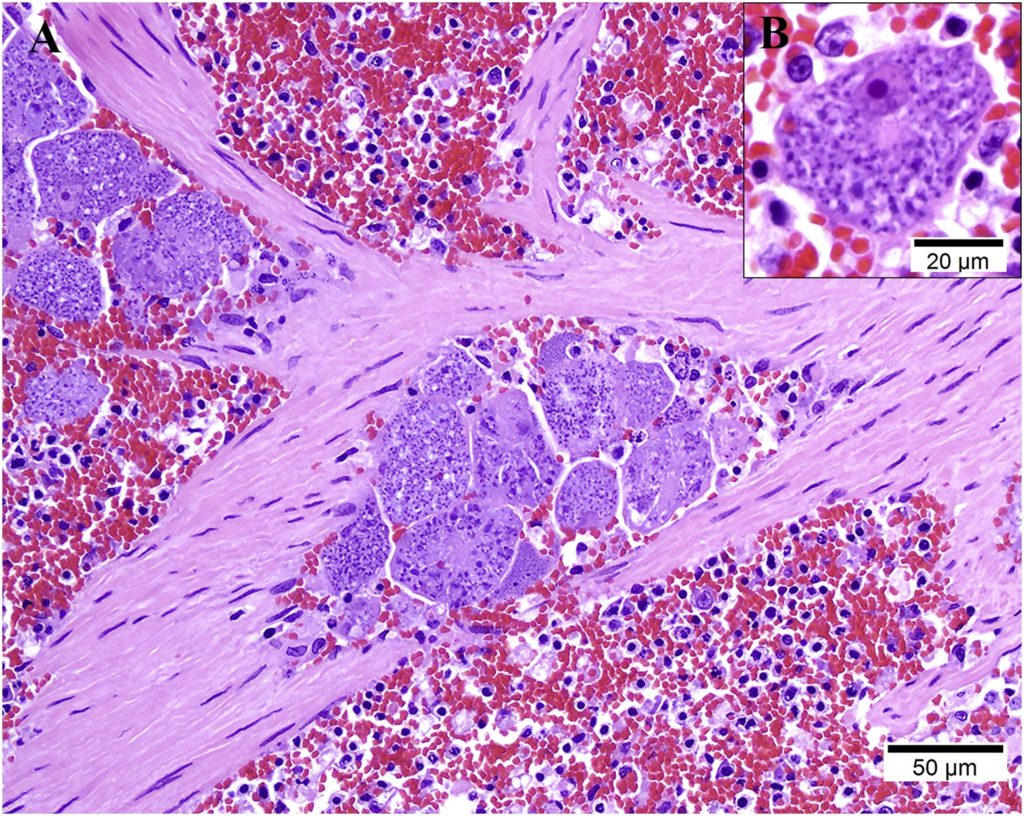Limited genetic variability of Cytauxzoon felis apical membrane antigen-1 (ama1) from domestic cats and bobcats
BACKGROUND:
Cytauxzoon felis is a tick-transmitted apicomplexan that causes cytauxzoonosis in domestic cats (Felis catus). Even with intensive care, the mortality rate of acute cytauxzoonosis approaches 40% in domestic cats, while bobcats (Lynx rufus), the natural intermediate host of C. felis, remain clinically asymptomatic. However, multiple reports of domestic cats surviving acute disease without any treatment exist. One hypothesis for survival of these cats is infection with unique C. felis genotypes of lower pathogenicity. Prior studies have identified genetically distinct C. felis isolates containing polymorphisms within internal transcribed spacer regions (ITS) of the rRNA operon. However, these polymorphisms do not correlate with the clinical outcome of cytauxzoonosis, and so additional genetic markers are needed to test this hypothesis. We selected C. felis apical membrane antigen-1 (ama1) as a potential genetic marker of differential pathogenicity. AMA1 is a vaccine candidate for relatives of C. felis within Plasmodium spp.; however its historically high level of genetic polymorphism has resulted in escape from vaccine-induced immunity. While such diversity has hindered vaccine development, the expected polymorphism within the ama1 gene may be useful to evaluate population genetics.
RESULTS:
A 677 bp sequence of the C. felis ama1 gene was PCR-amplified from 84 domestic cats and 9 bobcats and demonstrated 99.9% sequence identity across all samples. A single nucleotide polymorphism (SNP) was identified in domestic cats and bobcats with evidence for co-infection with both genotypes identified in two domestic cats. The prevalence of the two genotypes varied with geographical distribution in domestic cats. Nucleotide diversity (π) and haplotype diversity (H) were calculated for C. felis ama1 and ama1 of related apicomplexans to assess genetic diversity. Based on these values (π = 0.00067 and H = 0.457), the diversity of the C. felis ama1 gene region analyzed is considerably lower than what is documented in related apicomplexans.
CONCLUSIONS:
In surprising contrast to related apicomplexans, our results support that the sequence of the C. felis ama1 gene is highly conserved. While lack of genetic diversity limits utility of C. felis AMA1 as a genetic marker for clinical outcome, it supports further investigation as a vaccine candidate for cytauxzoonosis.
Jaime L. Tarigo, Lisa S. Kelly, Holly M. Brown and David S. Peterson. 2019. Parasites & Vectors; 12:115. https://doi.org/10.1186/s13071-019-3347-5

